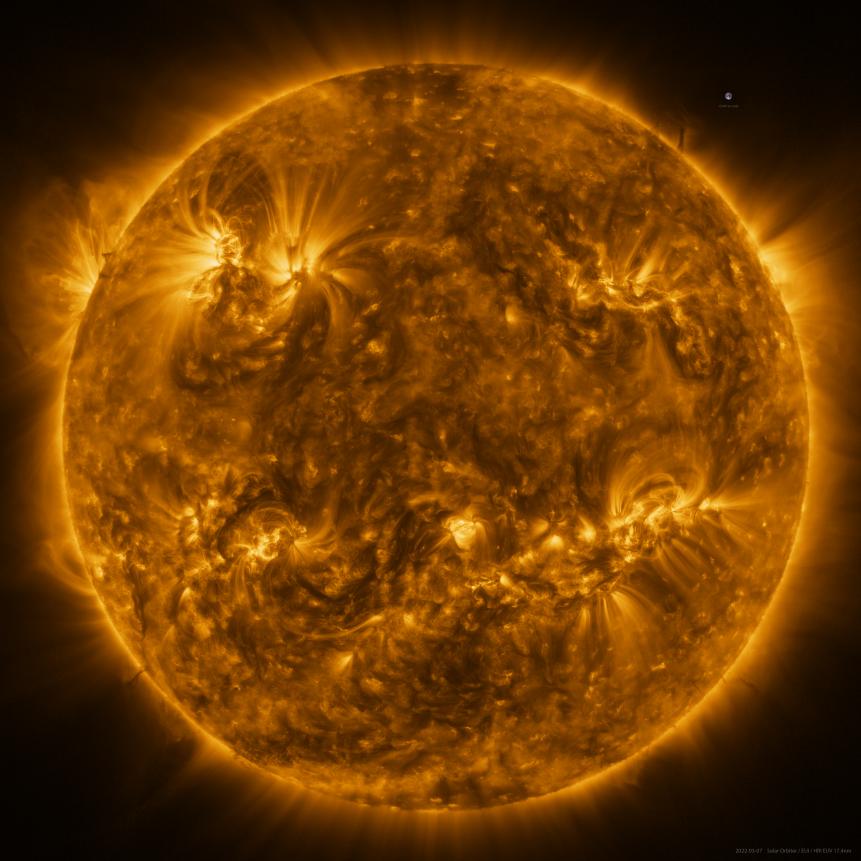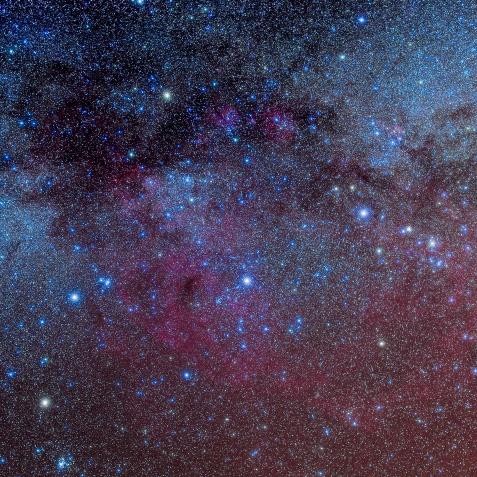
ESA/ATG medialab
Behold, the Sun as You’ve Never Seen It Before

The European Space Agency’s Solar Orbiter reached the halfway point between the Earth and the Sun to snap an amazing super-high-res picture. You can zoom in on the image to reveal the stunning details of the Sun’s surface. It’s like a Google Earth…but for the Sun.
The Solar Orbiter (affectionally known as SolO) launched in February of 2020 and will orbit the Sun (as the name implies) for seven years. The closest SolO will come to the Sun is about a quarter of the Earth’s orbit. That may not sound like it’s getting very close, but the heat at that orbit is so intense that SolO has to carry a protective heat shield, and its 21 scientific instruments were specifically designed to suffer the full blast of the Sun’s glare.
Speaking of instruments, to grab this amazing picture SolO used its Extreme Ultraviolet Imager. You might be more familiar with ultraviolet light as the kind of radiation that can give you a nasty sunburn if you don’t apply your sunblock. The scientists behind SolO chose this wavelength of light because it gives the cleanest give of the Sun’s surface, known as the chromosphere, and its thin-out atmosphere, known as the corona.

ESA & NASA/Solar Orbiter/EUI team; Data processing: E. Kraaikamp (ROB)
The Sun as seen by Solar Orbiter in extreme ultraviolet light from a distance of roughly 75 million kilometres. The image is a mosaic of 25 individual images taken on 7 March by the high resolution telescope of the Extreme Ultraviolet Imager (EUI) instrument.
In the image, you can see how violent and raucous the Sun can really be. At roughly the 2 o’clock position you can spot a dark filament. This is what’s called a prominence, which is an extension of the Sun that will likely completely erupt from the surface any day now. Magnetic fields tangle together to form these filaments, and when they snap like over-stretched rubber bands they release their energy in a quick burst, driving the prominence.
Also in the image, you can see the swirling bands of the Sun’s lower atmosphere. The Sun is incredibly hot on the inside (because of fusion), but incredibly cold on the outside (because of space). This makes the physics of the plasma inside the Sun act exactly like a boiling pot of water. Pockets of plasma in the center of the Sun heat up, expand, and rise to the surface. Once they touch the surface, however, they cool off, slinking back down into the depths.

ESA & NASA/Solar Orbiter/SPICE team; Data processing: G. Pelouze (IAS).
Solar Orbiter took images of the Sun on 7 March, from a distance of roughly 75 million kilometres, using its Spectral Imaging of the Coronal Environment (SPICE) instrument. SPICE takes simultaneous “spectral images” at several different wavelengths of the extreme ultraviolet spectrum by scanning its spectrometer slit across a region on the Sun. The different wavelengths recorded correspond to different layers in the Sun’s lower atmosphere.
In other words, the Sun is boiling.
This constant back-and-forth, up-and-down motion drives heat from the inside of the Sun to the outside, powering the chaos on the surface and the release of prominences.
SolO will spend its seven-year mission studying the structure of the Sun’s surface and atmosphere, trying to understand the complex physics happening there. Perhaps the biggest mystery is why the atmosphere (the corona) is so much hotter than the surface. You would normally think it would be the opposite, but something funny is happening on the Sun to drive heat into its outermost reaches.
Journey Through the Cosmos in an All-New Season of How the Universe Works
The new season premieres on Science Channel and streams on discovery+.




















